
You know what I like about this product? It’s two pieces of plastic that wiggle, and install in about 15-20 seconds. There’s no electronics, no secondary applications or uses, no complex installation manual. It’s as simple as it gets, yet still provides a small bit of movement which significantly changes the overall feel of riding indoors.
Now, like water bottle cages on rough roads – the devil is often in the details: In this case, the steep price. But also, what type of indoor riding you plan to do. I’ve been using these now for about two months in most of my indoor trainer rides, and thus I’ve got a pretty good feel for what works well, and what falls short. From Zwift to TrainerRoad, sprints to steady-state rides, and everything in between. In this relatively condensed review (for me anyway), I’ll take you through how the NEO Motion Plates work, and whether or not they make sense for you. Plus, a brief comparison to rocker plates in general.
As usual, this unit is a media loaner, and it’ll go back to Garmin/Tacx shortly. This review is not sponsored (nor does any company get to preview anything I review), and I don’t take any advertiser money from any companies I review. And as regular readers know, if something is crap, I’m gonna tell it brutally like it is – no matter the brand. Once this unit goes back, I’ll go out and get my own for any future testing needs. If you found this review useful, you can use the links at the bottom, or consider becoming a DCR Supporter which makes the site ad-free, while also getting access to a mostly weekly video series behind the scenes of the DCR Cave. And of course, it makes you awesome!
In The Box:
This will quite possibly be the most efficient unboxing to date. Above, is the box. Below, is the box opened up:
Inside the box are precisely three pieces of hardware, and one piece of paper. Though, I suppose technically speaking there’s also two plastic bags. Further, does the cardboard insert count as part of the box, or in the box?
There are two rails one reach for each side of the trainer, plus a front wheel block that’s tweaked to allow forward/back movement.
The paper thing tells you how to connect them to your trainer, which, as you’ll see, takes you no more than 20 seconds.
Ok, now we’re done.
Setup and Install:
The only thing in this review rivaling the efficiency of the unboxing section will be the setup and installation section. First up, grab your Tacx NEO trainer, and flip it over. Any NEO model in fact: The NEO (original), NEO 2, NEO 2 SE, or NEO 2T. Through the magic of accidental engineering (and saving costs by not changing things), all of these units share the same feet layout. Here’s my original Tacx NEO (left), compared to the latest Tacx NEO 2T:
Now, pop out the four rubber feet with your fingers:
Next, grab the right rail (it’s marked RIGHT, and stick it on the right side (rider’s right side), with the arrow facing forward. Simply let the feet holders on the rails play footsie with the feet on the trainer:
When it comes to attaching to the unit, they use magnets to sorta stay on to the feet. But realistically, it’ll fall off if you pick up the whole trainer. In fact, if you look at the manual closely, you’ll notice it has a warning about magnets, specifically to not try and make love to the unit if you have a pacemaker, nor to wedge your credit cards in there. I don’t know which Zwifters do that, but I can only presume it’s the people who like the Richmond course.
In any case, do it again on the left side:
Now, plop your trainer back on the ground, and ensure that this little notch lines up on both sides. If they aren’t aligned, you won’t get the full range of motion. To ‘align’ them, simply slightly lift the trainer, and adjust the rail. Again, this takes about 1.8 seconds.
And finally, throw the front wheel block out near the front of your bike, with the arrow facing forward. Align the center of your wheel-hub with the marking on the side of the wheel block. This wheel block allows forward/back movement (whereas most wheel blocks specifically prohibit movement).
With that, we’re done.
Daily Usage Experience:
I’ve been using the motion plates for about two months now, so I’ve got a pretty good feel for them. Starting off with how they work, they essentially slide back and forth on two wheels per rail that form a small valley, where it self-centers to.
You can see this in the video up-close, or a still shot of it below (left photo at low-point, right photo at high-point):
Anyways, on the track itself, you can see the total extent of the movement, which is approximately 2.5cm in either direction (thus 5cm total movement):
Now, yes, that’s a small amount of movement, but, as has been shown time and time again with other motion systems, it’s all about tiny movement. There are basically two basic goals/premises with a cycling motion system. The first would be to replicate the actual movement of an outdoor bike. For that, you need more moving axes – such as the Saris MP1 or others. However, the second goal is to replicate a slight bit of movement that in turn forces your body/core to constantly adjust to that, which in turn shifts your butt on the saddle just slightly around – just as it does outdoors. Saris did a study on this with Trek, that basically shows even a slight bit of movement makes a big difference in longer indoor rides (though I’ve never seen a finished paper of that study). However, the contents of that study are backed up by countless real-world people saying the same for years.
So in the sense of what Tacx is doing, it’s that very slight movement forward and back. And, the NEO specifically already has very slight tilting motion left/right (side to side) built into the frame of the trainer. It’s not to the extent of a full rocker plate, but it’s certainly more than a static trainer, or even the Wahoo KICKR V5/2020 with its AXIS Motion Feet.
As I noted earlier, I’ve been riding the Motion Plates for a few months. I’d say in general my indoor trainer workout blend is 70/30, skewed towards structured workouts. And in general, on these structured workouts you’re not doing all-out sprints. So to that end, I’m aiming for mostly steady-state efforts, albeit sometimes with some 30×30’s or 15s efforts tossed in. The point being, in structured workouts I’m not getting out of the saddle and throwing down. So for these workouts, this is awesome. It just works exceptionally well at providing the ever-present jiggle/wiggle movement depending on the intensity of my pedal stroke. I hesitate to say it feels more natural, but, it…well…feels. As in, I feel something. Which, is better than riding my shed’s or DCR Cave’s concrete floor of non-movement.
However, inversely, if you throw down a sprint, the unit won’t feel super natural. That’s because you’ve only got that 2.5cm of travel, which means a split-second after your first hard down pedal stroke, the trainer will lurch forward and then immediately either bounce back, or simply bounce a bit depending on how much sprint you throw at it. For lighter efforts, it doesn’t feel bad, but it’s certainly not natural. However, keep in mind, the same is true of the far larger/more expensive Saris MP1. Do a hard sprint there and you’ll quickly travel that roughly foot or so of movement distance and bounce back as well. The main difference is the ‘cap’ on the sprint. With the Saris MP1, you can do moderate surges without hitting the travel-limit. Whereas with the Tacx Motion Plates, you find that limit with any surge.
You can see below in a rather aggressive sprint (way more aggression than I typically throw at my bike), that I can cause the rear of the plates to hop slightly upwards for a split second (notice the slight air gap at the back below the blue plate). Again, watch the video to see it. But, the same is true of many trainers, plates or not.
Does it matter though? Meaning, did it impact my riding? Nah, not really.
For better or worse, I’ve just grown used to it. In the same sense that there are countless other quirks of riding indoors that don’t replicate outdoors, this is just one more on the list. It doesn’t bother me personally, but I could see how it might bother some. In which case, if you’re planning on doing a sprinting-full race, you can simply remove the plates in a matter of a few seconds (as seen in the video). Whereas you might want them installed for an ERG mode workout.
Arguably though, the single biggest benefit of the Motion Plates is simply the footprint. There is none. They don’t take up any extra space (well, I suppose technically 2.5cm forward and back). And my usage is a good example in contrasts. At the DCR Cave where most of these shots are from, I’ve got plenty of space. It’s literally a converted industrial warehouse space. However, where I’ve mostly been riding the Motion Plates is at home, in my shed, where I have exactly zero extra space. There’s no additional space for even a trainer desk in there, let alone a giant rocker plate system. It’d be a non-starter.
Given I’ve long used the older Tacx NEO 2 in the Shed at home as my main smart trainer (inversely, I tend to use the Wahoo KICKR at the DCR Cave/office), this solution couldn’t have been designed more perfectly for that scenario. And when the trainer is folded up, the motion plates can stay on, and don’t take up any appreciable space.
And thus, we get to the main conundrum of the Tacx Motion Plates: The price.
Some Pricing & Comparison Thoughts:
My first (and continued) reaction to the price of the Motion Plates is: “Are you @#$#@ kidding me? You’re charging me $300 for an injection piece of plastic with a few bits of metal?” – I think I even said roughly that on the call to Garmin (which acquired Tacx in 2019). And an e-mail. A few times in fact.
When people often talk about the Apple Tax, they think of examples like the Apple Pro Display XDR Stand, costing $1,000 (for yes, just *the stand*). This is sorta like that, except, it’s…umm…a Tacx Tax. Which, is in effect a Garmin Tax. And while there’s always been a bit of a Garmin Tax, for the most part, like the Apple Tax – you kinda get what you pay for.
And in effect, as much as this feels like the massive money-grab it is, it’s hard to argue that it’s not a good product. Size-wise, it realistically can’t be beat. There’s nothing on the market even close to this (even for side-to-side movement). A passerbyer would likely never even notice it was on the trainer, unless someone pointed it out. Road-feel-wise, again, for forward/back movement, most of the other options are 4x the price, albeit they do have usually far more forward/back range (and again, far larger footprints).
Ironically, the closest example of a manufacturer-made accessory in this realm is Wahoo’s Axis feet. They cost $99, and are basically just fancy versions of tennis balls. In my testing, I showed that if you used a trainer mat, this had negligible to non-existent side-to-side movement. But hey, at least Wahoo didn’t charge $300 for them. That’d have taken real balls. Like…umm…tennis balls.
If we look at full-blown rocker plate solutions, for pre-built ones those start at $300-$400 for a single axis. Some are smaller footprints that go just a bit beyond the trainer. And some are ones the size of a trainer mat, and not at all easily portable/storable. And most of the smaller footprint ones don’t have fore/aft movement, but rather side to side.
Point being, as much of a Tacx Tax as this is, it’s hard to find a valid comparison of a similar product at a lower price point with even remotely similar features. Especially if someone with a 7-year old Tacx NEO 1 is looking for a simple and easy solution to add movement.
Wrap-Up:
Here’s the thing, I really like the product itself. It’s one of those near-perfect products in terms of ease of installation, and ease of use. It does the job for what I want it to, and my particular riding style. And it does so without getting in the way, being difficult or challenging to mount, or taking up any space. Plus, the fact that it’s compatible with any past NEO trainer is brilliant.
Of course, as I’ve made clear by now, what’s less brilliant is the price. It’s just a very hard price to reconcile with what we’re getting in terms of material cost. Certainly, there’s an engineering/distribution/etc cost to deal with, but I keep thinking this product would do exceptionally well at $149 or perhaps even $199 – it’d be a no-brainer for anyone who bought a NEO trainer in the last 7 years.
Now I suspect we’ll see more accessories – not just from Garmin, but other companies as well. Over the last two years, we’ve largely reached the indoor smart trainer saturation point. At least for higher-end units. Anyone who was planning on buying a new higher-end smart trainer has done so in the last two years. So companies across the board are starting to see sales taper off for the trainers themselves, and instead are looking to replace that revenue with trainer accessories. Things like indoor desks, fans, steering, motion systems, etc…
Ultimately, you’ll have to decide for yourself whether or not the price is worth it. For me, I will likely pick up a set of these for my older NEO 2 in the shed, simply because of the limited space and me predominantly using it for less frisky workouts. But, it’ll still feel like…well…I’m being fleeced for it.
With that, thanks for reading!
Found This Post Useful? Support The Site!
Hopefully you found this review/post useful. At the end of the day, I’m an athlete just like you looking for the most detail possible on a new purchase – so my review is written from the standpoint of how I used the device. The reviews generally take a lot of hours to put together, so it’s a fair bit of work (and labor of love). As you probably noticed by looking below, I also take time to answer all the questions posted in the comments – and there’s quite a bit of detail in there as well.
If you're shopping for the Tacx NEO Motion Plates or any other accessory items, please consider using the affiliate links below! As an Amazon Associate I earn from qualifying purchases. It doesn’t cost you anything extra, but your purchases help support this website a lot.
I've also put together a quick list of some of my favorite or most compatible accessories for this unit:
And of course – you can always sign-up to be a DCR Supporter! That gets you an ad-free DCR, access to the DCR Shed Talkin' video series packed with behind the scenes tidbits...and it also makes you awesome. And being awesome is what it’s all about!
Thanks for reading! And as always, feel free to post comments or questions in the comments section below, I’ll be happy to try and answer them as quickly as possible. And lastly, if you felt this review was useful – I always appreciate feedback in the comments below. Thanks!



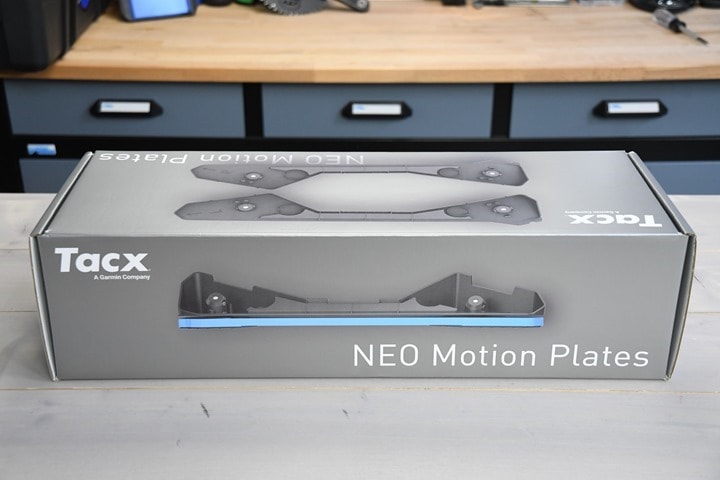
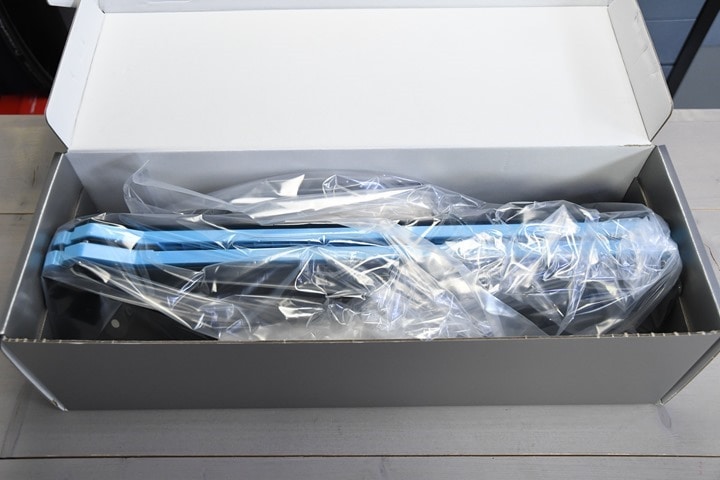
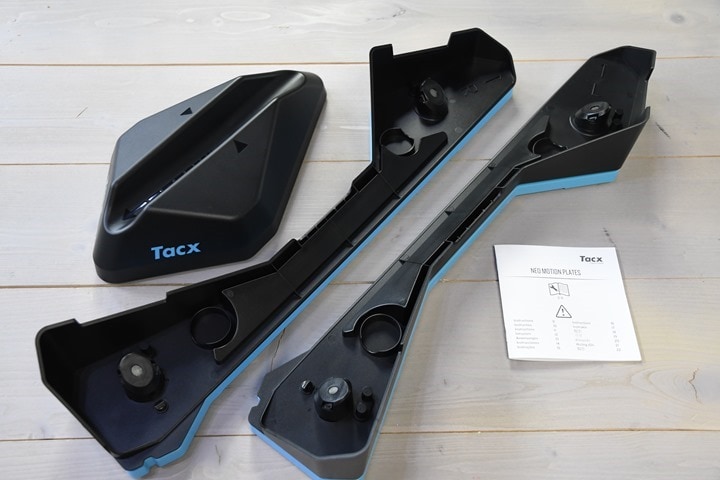
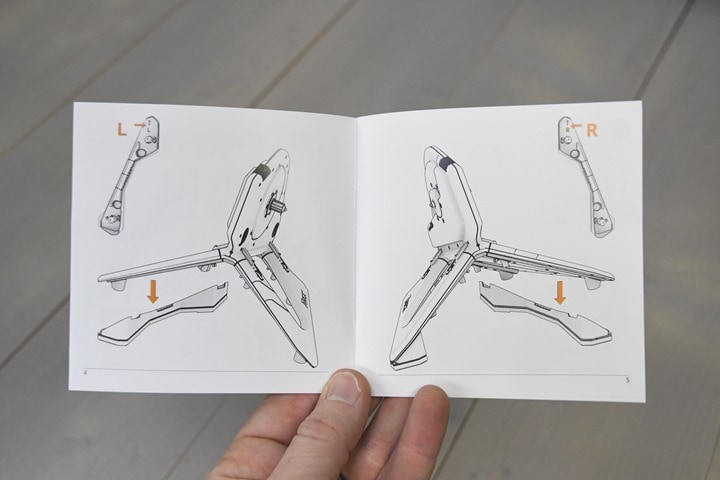
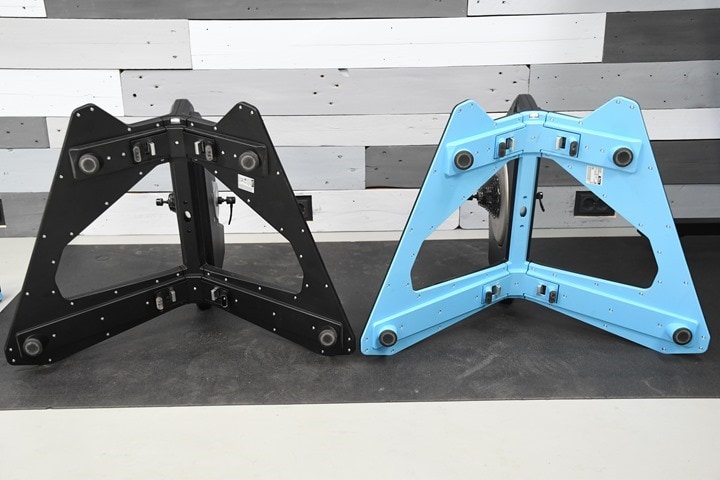
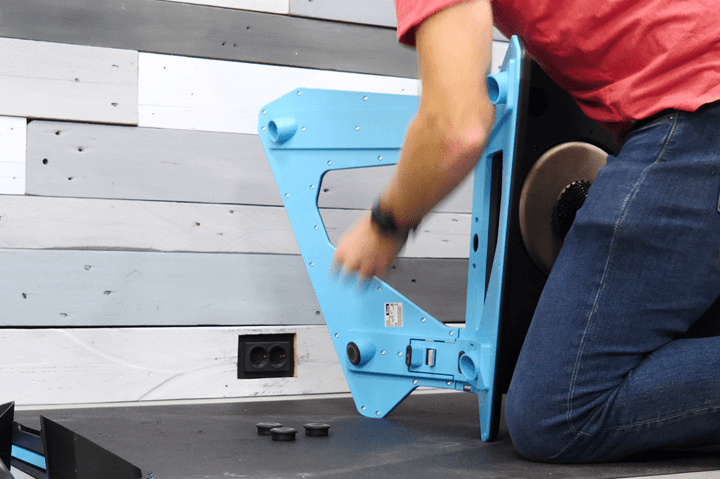
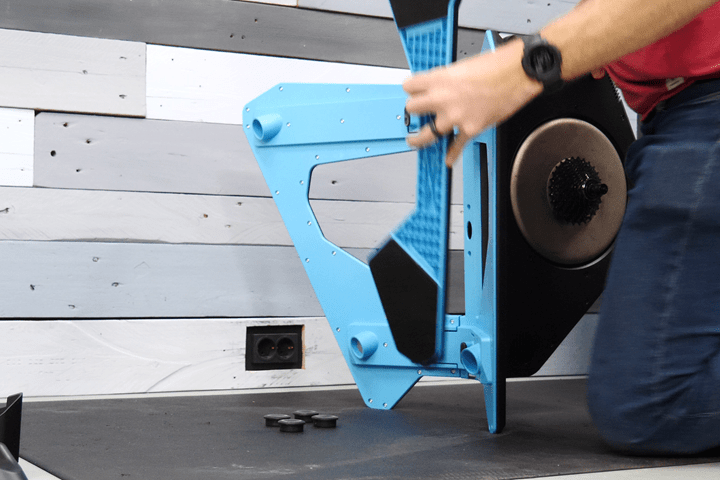
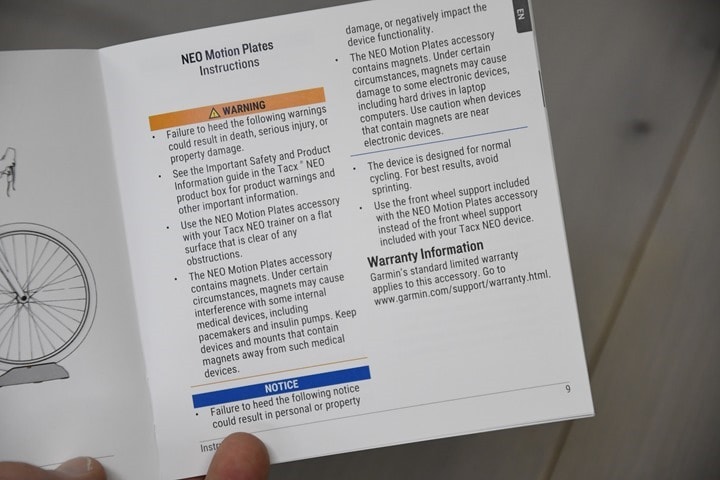
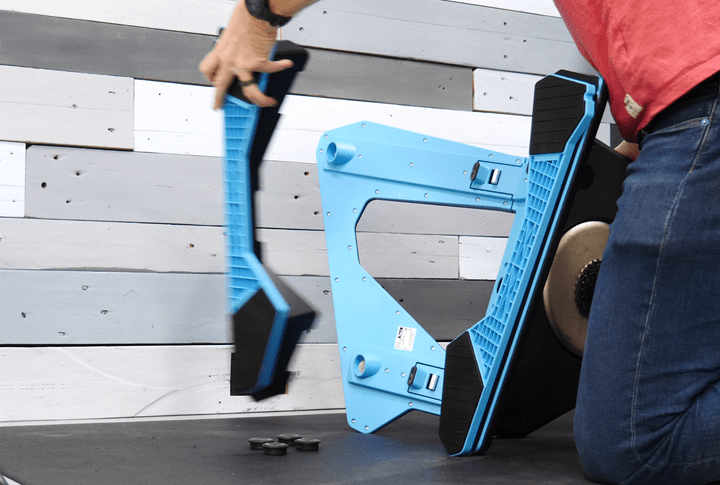
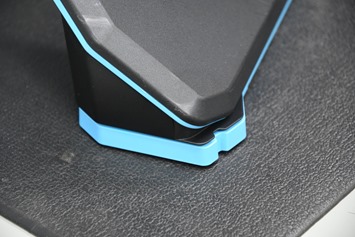
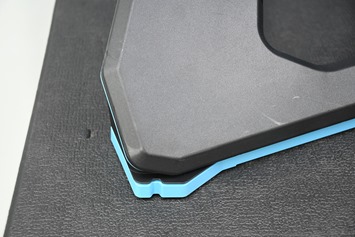
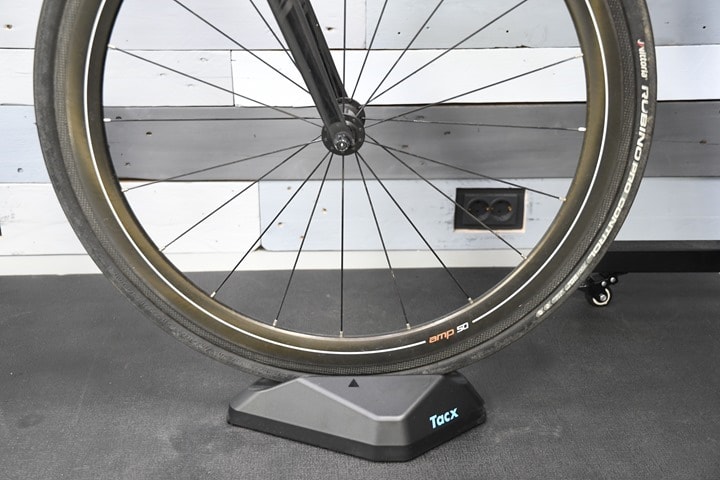
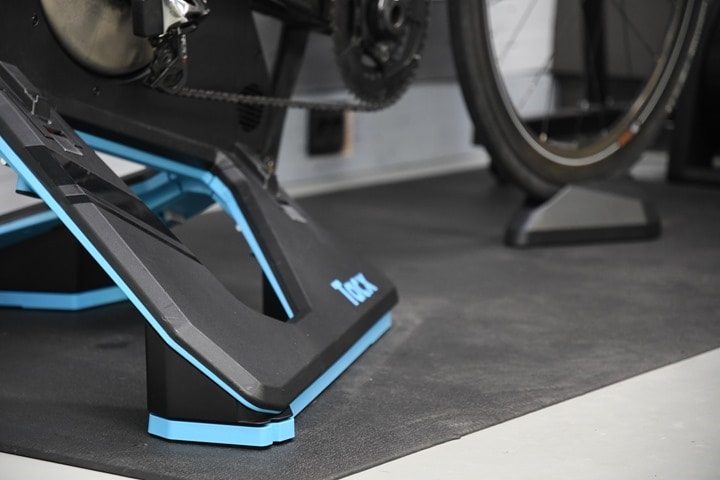
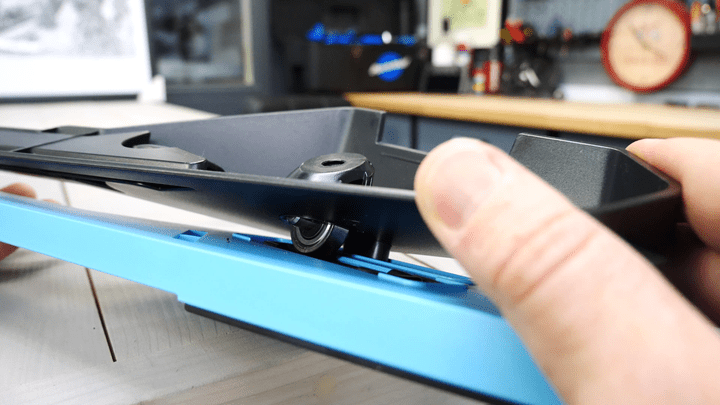
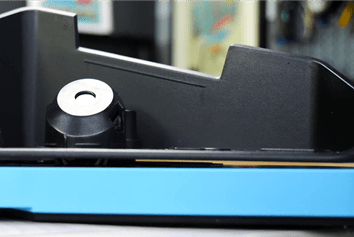
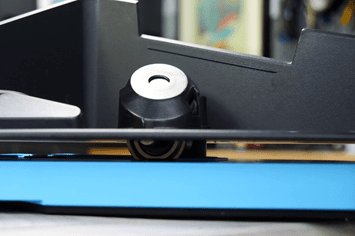
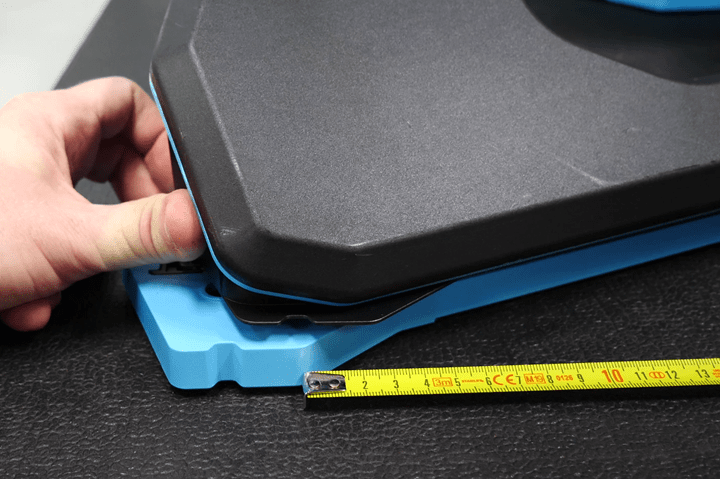
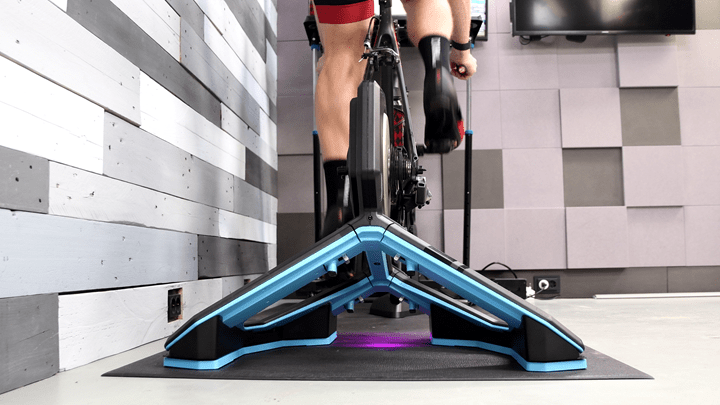
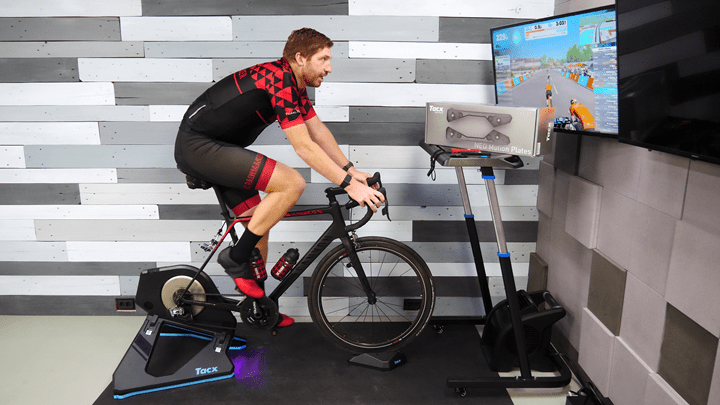
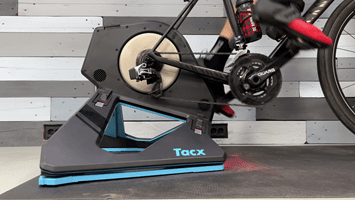
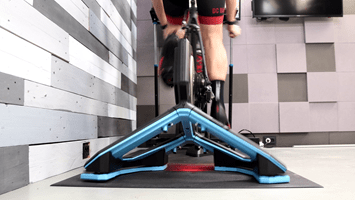
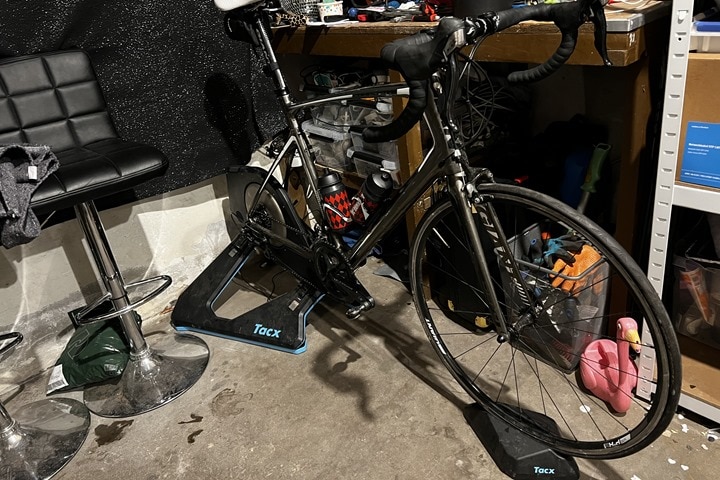
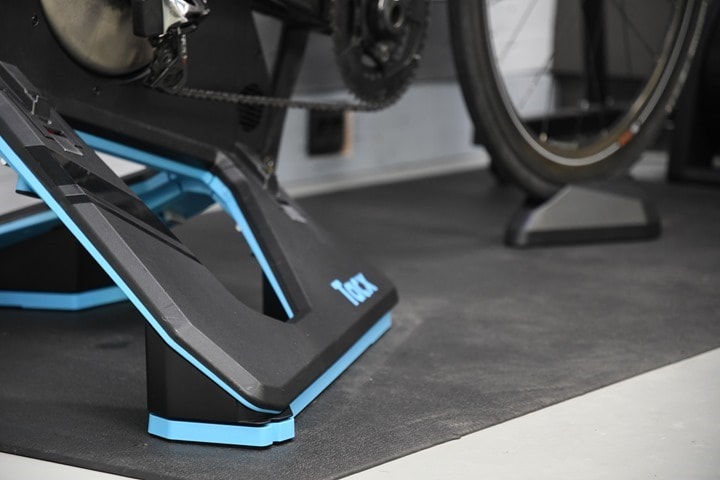
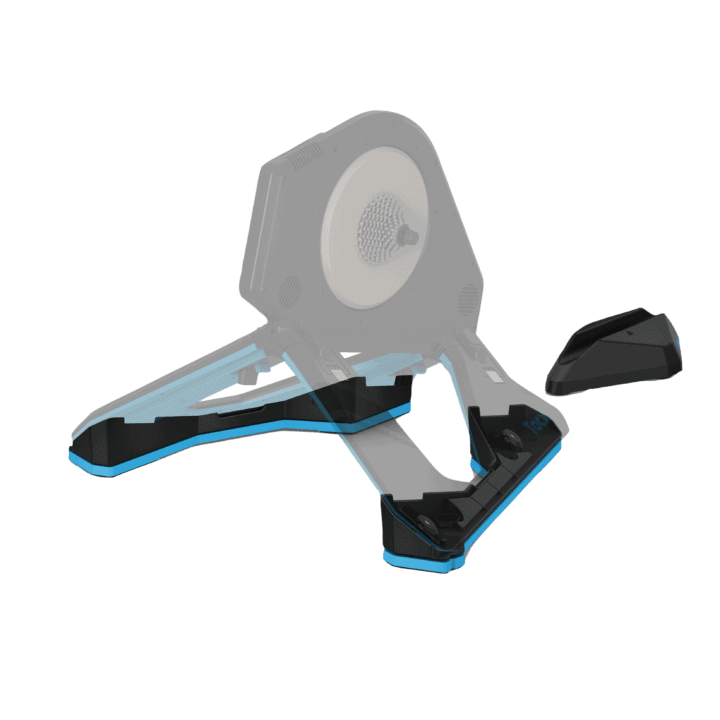
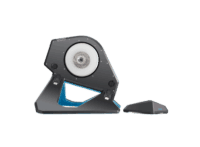
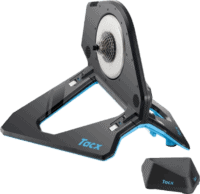





















Thanks, as always! Re “Plus, the fact that it’s compatible with any past NEO trainer is brilliant.” – How about the NEO bike?
The Neo bike has different feet in the back from the Neo trainers, and has feet in the front (obviously since there’s no wheel). These two facts make compatibility impossible.
Thank you for your always informative reviews. Would these be compatible with your setup if you were using a Sterzo for steering? It looks to me like it wouldn’t be because if you don’t use the front plate (which you wouldn’t if you want steering from the Sterzo) the movement wouldn’t quite work with just the back ones on. Or am I wrong here?
I am curious about this as well.
Ditto. Also curious re: Sterzo + motion plate functionality. I’m sure these work with any front wheel block or stand, it may just be the case that you don’t get the full effect or it may feel weird/unbalanced and be off-putting enough of an experience you’d never want to run that combo. I do wonder if Tacx/Garmin recommend NOT using a standard block that holds your wheel in place because it may put undue stress on the rim/fork.
My eyes genuinely watered when I saw that price. I don’t think they’re going to make indoor training $300-worth of better.
The price is definately a bit OTT, but as you say the competition costs more and is generally bigger, so what’s the incentive for them to lower the price?
At £150 or so I’d have placed an order already, at the £260 RRP I’ll not be bothering.
This is a massive “NO” here.
It quite simply doesn’t provide £300 worth of value!
I would like to see a solution to tilt up and down this trainer, to use with the Elite Rizer, or better a developed Tacx Rizer, but if they will use the same Tacx tax, problably it will be proibitive too :-)
me too !!
This is just what I’ve been waiting for. I do mostly structured workouts, and have been getting very achy after about an hour on the trainer (in fact, I blame it on my just-diagnosed ischial bursitis). I’ve been eyeing the KOM rocker plate. But although it’s not mentioned specifically, it sounds like Ray prefers this.
When first reading “steep price” in paragraph 2, I was expecting to see at least $599.
Maybe I’m numb to insane inflation everywhere, but a $300 on a >$1,000 trainer seems reasonable from a dollars to functionality point of view.
Certainly fair to note the actual materials cost is nil, but the value-add ratio is there, for this consumer.
2 cents!
This is something I was thinking about when he wrote this. For me, 300$ is ridiculous, family, 3kids, DC area. But if you are a single person making 200k per year maybe 300$ is nothing. Especially with the current inflation. I just paid 15$ for a cheese quesadilla and a side of guac for lunch!
I have to say, for me it was nice to read Ray call the price absurd. But I totally get your perspective on this. I think that has to be challenging when writing these types of assessments is making a judgement call on pricing especially amongst a crowd that is eagerly waiting to drop 1k on a watch.
“the actual materials cost is nil”
As with most plastic parts, materials cost is not what drives total cost – it’s the molds, injection equipment, packaging and transportation that make up the bulk of the costs.
Agree that $300 is nuts. What Garmin really should do here is build this sucker into future Neos. The Axis feet aren’t a real difference maker for Wahoo because they don’t do much. But real motion built in? That would make quickly make the Neo a more appealing option than the Kickr.
I have a 2T and a Neobike, which is my primary trainer. I move it from the corner of a room to the center in front of a tv for training each time so don’t have the space for rockers. I would be all in on this, even at this price point, if they made one to work for the Neobike, although I agree it’s really expensive for what it is.
Was deciding between the Neo or KICKR. Went with the KICKR but now I’m thinking I chose the wrong one :-(
Meh, you have LOTS of options for motion if that’s your goal. If you are in the US or Canada, the InsideRide E-Flex for $450 USD is a much better option than these Neo feet.
Not to mention there are a range of rocker plates for order around the world for pricing just a bit over this Neo option above, that include far better lateral rocking action and some add the fore-aft motion.
So, I think you have a fantastic trainer with more than a few ways to add motion if that is your ultimate goal.
No……you picked the right trainer. The Kickr will not randomly self-immolate and you have the best service on the planet standing behind it. Skip this overpriced minor accessory and get an MP 1.
LOL, it’s fine to point to the range of Neo failures, but let’s not forget the past (and in some cases, still present) failures of the Kickr/Core trainers since they have moved to the silent ribbed belt design. That is not inconsequential and may well parallel the count of failures we see in the Neos. But we can only guess on that with limited info shared via social media.
And I can’t help but point out the apparent irony of criticizing the Neo feet as “overpriced” when looking at the suggestion of the MP1 which happens to be the most expensive trainer motion option I have seen (at least until the Gymrail X-1 gains wider sales). The MP1 is well liked by many users, but has notable feature limits (non-adjustable motion for one) and price when compared to several other trainer motion options in the market.
As I said above, quite a few options out there to include the MP1 and many more less expensive ones from which we have to choose.
I had a Neo gen 1 on long term load and had no bother with it despite it’s age.
As for a rocker plate, I’ve been thinking about building my own (with fore and aft movement) but it’s the size and bulk putting me off. These feet are a really neat option and would match my use case, but they’re just really overpriced.
It’s all academic anyway as I’ve bought the KICKR 😂
Had an MP-1, it didn’t even last a year. Sweat gets in between the wood and the aluminum tracks and ruins the wood. Saris was absolutely zero help (you should wipe up sweat immediately, sir) and basically told me to go fly a kite. It’s poor design. As for the self-immolation, my OG Neo is still going strong, all these years later.
Add me to the voice for a similar neobike solution. Since the current feet are just bolted on I suspect we would have new footer components rather than a slick little add-on like this.
+1 another for a knowing if it fits the rear of the Neobike
+3 for the Neo Smartbike
This looks like a possible opportunity for someone to reverse engineer and optimize it for 3D printing. Then sell it as a DIY-assembled kit.
Exactly my thoughts.
Tacxation without representation…
I have a Wiggle LifeLine rocker plate which moves side to side, these Neo feet would let my trainer move forwards and backwards. The MP-1 has both forward/backwards and side to side motion, therefore would there be any benefit in combining this with my rocker plate?
My head says I would likely tip over sideways without attaching the trainer to the rocker plate. Maybe with loose straps around the feet, the trainer could still move forwards/backwards but not be able to tip over 🤔
Any chance you could test that Ray? 😉
Thanks for this review :-)
Compatible with the Elite Stereo Smart ??
Sterzo, not Stereo :-(
The Wahoo Headwind is, what? $250?
I have one and you can pry that from my (very cool) dead hands. The value prop there at $250 is easily justified: never having to “turn on” my fan. Just get on bike, it magically listens for a heartbeat, then shuts off when I take the HRM off.
…but this? $300? For a mechanically more simple, non-electronic product? I would not be surprised if the price on this drifted down to $200 a year from now after disappointing sales stats.
You know you can get a $10 remote control plug for a $30 dollar normal fan right? 😉
Yup. Don’t care. Having the Headwind automate that, ramping speed up and down with my HR is something no other Rube-Goldberg setup will do.
There you go again, Ray, picking on us Richmond lovers. But hey, try riding a fixed gear on Titan’s Grove and then tell me what’s not to love about Richmond. :-)
I share your feelings about the price because as a Neo owner it checks a lot of boxes for me, but I find the Neo has enough lateral movement for a 4 hour ride and I’m an out of saddle sprinter on a road bike. At least it’s a choice for Neo owners. Having owned the Inside Ride Motion Rollers before the Neo I can see a benefit for the limited fore-aft movement for long rides in the saddle. The fact that the plates are easily installed and removed is also a plus. I understand that it doesn’t make sense for most users on a budget, but neither do the Neo or the Kickr trainers.
What I am curious to know is if the motion plates enhance the cool road feel feature of the Neo over surfaces like cobbles?
Great review, as usual.
From my own experience, side to side rocker motion is fully sufficient to eliminate saddle discomfort after the first 60-75 minutes on the trainer. I have been able to double my time on the Neo with no pain. Exhaustion, we’ll that’s a different story! I think most would say between 70-80% of the benefit of a rocker plate comes from side to side motion, and this attachment, while cool, doesn’t help with that. Finally, there are many rear only side to side rockers that are approximately the same size footprint as the Neo. Check out Axxion for example.
Good morning Ray,
Question regarding the perspective directions of Wahoo and Tacx in relation to recreating a better feeling and better training experience indoors.
We see Taxc moving in the direction of recreating more of a forward/backward motion and minor side to side. Wahoo is more static and with the addition of the Climb adds the elevation feeling.
Which one in your opinion is the more appropriate for a better feeling and training indoors.
Thank you
Ray,
Given that you train on not yet released products for months, do you have to restrict who can visit you in certain locations so they don’t see it? Or do you make sure to only use them in hidden spots where no guests or friends come around?
Friends? Sorry, what are those? ;)
(Or, alternatively, that’s why Shane and Des make such good friends and riding buddies, we’re all under the same embargoes)
In a nutshell, I virtually never ride/run/etc with people. This is part of the reason, the other part is simply that my training schedule is heavily driven by what I’m testing, and a specific workout that might need to accomplish the testing goals that day (i.e. interval workout to test optical HR, or a trail run to test GPS, or a specific trainer workout to test a new trainer app feature).
Covid has actually somewhat helped in that almost nobody comes to the DCR Cave anymore for anything, but when people do, I’ve got rooms to stash any embargo stuff away. And have a fairly nailed process for where under-embargo things (like boxes) are stored, so that last-minute showups don’t see things.
Stuff like full indoor-bikes are a bit trickier, but I’ve got plenty of space, and failing everything else, I can always put a giant blanket over something if I need to for a visit.
Thanks for the explanation! I figured that covid had probably made it a bit easier.
Do you, DesFit and GPLama ever split up the testing amongst yourselves to save time or get different perspectives? Seems like a great opportunity to make a strong testing team.
We don’t tend to split-up testing. We basically test to our own beats, and then usually casually double-check oddities or ping each other if we’re trying to get clarity on some piece that the company is giving us a run-around on.
Also, there are cases where we’ll cross-check each other for scenarios we can’t test. For example, sometimes Des can get tiny bits on mountain stuff that I can’t (like skiing in my Fenix 7/Epix review), or I can usually get some ‘bike routing hell’ bits that they can’t due to the density of the Amsterdam/Netherlands bike routes, and so on. Sometimes it’s certain compatibility things that one of us might have access to if another is travelling or just doesn’t have it.
But when it comes to overall conclusions, we pretty much do our own things. I’d say our overall goal is ensuring that our reviews are accurate, which is where we tend to collaborate the most on (again, double-checking spec stuff, or outlier scenarios).
Thanks for the review. Curious if anyone knows the max front tire size that will fit in the front wheel block. I have a 52c on the front 650B wheel… gravel/touring bike. Will a 52c/2.1” tire fit in the front groove? Looks like it might be tight in the pictures.
Thanks!
A post I’ve seen elsewhere says 28mm.
Thanks Rich. Looks like I need a plan B.
got these in last night and didn’t read the specs on the front wheel block, but oh well.
The front wheel block is nothing more than a flatter block that allows back and forth motion of the wheel to match the motion of the rear. I solved it by making a small riser out of some interlocking dense foam tiles that I’ve cut down. I like to have my front wheel a bit higher anyway, so mine is about 2.5 inches high with the 2.1 inch gravel tires I’m using. If my 700×40 tires are on, i can quickly add or remove one of the foam pieces to get the height I want.
I was just talking to my dad the other day about how I would like to get some rocker plates but don’t really have the space where my bike setup is.
Just ordered these for my Neo 2T from the garmin site! I agree they are kinda pricey, but I try to consider fitness equipment an investment in my self and my health.
I have Zwift and Trainerroad and find myself doing trainerroad workouts 90% of the time, I love the train now recommended workout feature.
Will these work with the Flux s?
No, Neo trainers only.
So what happens if you combine that with a rocket plate that supports only left/right movement (e.g. Lezze Boom Board Pro)? Will it get very wonky or result in a better movement simulation?
In essence, it will be similar to the rocker plates with the lean and fore-aft motion. My main concern with adding these onto a rocker is if they are really sufficient for lateral restraint of the rider and bike. It’s possible to lock in the lower (fixed) portion of the Neo sliders, but I am unsure how strong the side support is between the fixed and moving sections.
If there is not great side support, a hard effort or lean might lead to separation, failure and a crash. I would have to closely inspect the design to know better, but I’d urge caution for anyone with the means to test it. Might work well, but only if there is sufficient support.
Is the main benefit of these that they’re kinda fun and make indoor riding more engaging, or do they significantly add to comfort? Could they help me ride longer inside before my sit bones start to rebel?
Generally speaking, it is for comfort. My testing based upon rigid vs lateral rocking showed notable differences in saddle pressure, specifically peak values when adding even moderate levels of motion. Rigid leads to excessive pressure and discomfort in short order.
I did not ever test pure fore-aft motion (like these) against rigid, but I predict that even this motion (along with the flex that already exists in the Neo) will lead to greater comfort for most riders.
In addition to that seated comfort that is common, the greater freedom of motion can make standing efforts easier to apply without the odd motion of a fully rigid setup. So mixing in standing breaks becomes more common and helps with long term comfort while riding the trainer beyond 60 minutes.
I do a lot of Erg sessions on zwift/Neo OG and I admit over 2 hours is definitely less comfortable than on the road. 3.5hrs is about the limit of what I can do without it being a test of mental fortitude. And so the notion of these does appeal. But not at NZ550/USD $380 which is what they are showing they will cost here. I do worry a bit about what happens in a sprint when I do race, as I have been known to bounce a little even without a plate (90kg 6’4″, 1200w+ sprint)
But today isn’t the right day for Garmin/Tacx to try sell me this. Replacement Neo bearing kit on Garmin US site, $69.99. Price in NZ for same part number – bike shop quoted NZ500 from the wholesaler. Now I get that shipping costs and warehousing means we pay more in NZ. But this is just pure mental.
I had to double check the price and the date a few times to confirm that it was not April Fools. That pricing is absolutely mental – you can get really good watches for that price, a perfectly serviceable (possibly used) turbo, or some blue plastic.
Hi Ray, love the in depth reviews and it’s helped me select products. How would someone couple these with the Elite Rizer? The only way I could see doing it would be to replicate a plate under the Rizer that allows it to slide the way the trainer does. Otherwise the only Rizer-compatible solution I can think of would be the large full-bike platforms.
It’s not really worth it, since the Neo has a fixed axle (non-rotating), which is incompatible with the Elite Rizer in the first place. It’s not a compatible combination, regardless of the fore-aft motion feet.
The $’s put me off at first but then a 15% DCR discount from Backcountry along with Ray’s good recommendation was enough to put me over the fence.
HOWEVER, Backcountry wouldn’t recognize the DCRAINMAKER coupon code. But then they had a ‘first time 15% discount’ that I tried to use but that process proved convoluted and scammy seeming. Chatted with a CSR which didn’t help. Not her fault but the fault of the scammy Backcountry mgmt making the process intentionally contorted enough that people don’t get the discount.
Ray, you shouldn’t promote Backcountry if this is the kind of business they are. I prefer to avoid Amazon when I can but in this case Amazon is more trustworthy.
Thanks for the review :)
I got mine a week ago, and I have been riding with them ever since. The improvement in ride feel is so noticable that I will not ride my trainer (original Neo) without them anymore. I also experience much less fatigue after the ride.
There are several drawbacks – most importantly, when I sprint compete trainer goes backwards. For the price there should be remote lockout (such as on suspension forks) so that you can fix it when needed. There is also no mention of service option – who knows how long these bearings will last.
Regarding the price, in cycling you can spend much more on things that will have much less impact than this thing. For example, the price difference between 1st and 2nd tier cassettes (Red/Force, XX1/Gx Eagle) is almost equal to this price, but I do not know anybody who can feel the difference between them during the ride.
Any updates on whether or not this works with the elite sterzo smart for steering in zwift?
Completely off topic, but my question is about the cracking sound that (presumably) comes from your bottom bracket: have you found the cause and would you be able to share it?
I have similar issues, but my bicycle repair man does not seem to be able to find the origin of the issue..
Love your review and especially interesting is that Garmin is currently throwing this motion plates in for free when buying the Neo 2T.
Hello, I am wondering if this could lessen strain on a carbon frame ? I thought carbon frame damage due to turbo trainer usage was a bit of a legend until I had a problem with my beloved TT bike mounted on a Neo. Is there an engineer in the room :) ? thanks
I do think there is the chance that motion systems for trainers can lessen the loading on the frames. A rigid trainer on a hard floor leads to high forces on the rear triangle of the bike in particular, since there is no ‘give’ in most trainers.
The Neo is one exception since they designed in a certain amount of ‘flex’. In my testing, it is likely better than most other rigid trainers, but it falls well short of even some of the stiffer rocker plate setups.
To your specific question on the Neo Motion Plates, I think the addition of the fore-aft motion freedom is potentially beneficial in reducing frame forces. But I don’t think it will have as much of a positive benefit when compared to the left-right lean motion freedom that is given with rocker plates.
I see the lateral loading, that happens whenever we are not “straight” in our pedaling and motion. It’s easy to see the handlebars and especially the bottom bracket “move” a bit laterally under harder efforts, especially when standing. All that connected to the rear section and held in a rigid (or very stiff connection like the Neo flex) is a recipe for high forces and stress.
When you add a rocker plate and allow the bike and trainer to lean, this should reduce the peak forces associated with that lateral motion. Couple that with fore-aft motion, and I think a rocker plate can be the lowest forces on a bike inside with rollers as the only thing better.
I just bought the neo 2t and got the motion plates free with a rebate. My estimate is that they extend the comfort riding by 25%. Unused to ride for 1 hour with no discomfort and now it is almost 1 h and 20 minutes. I enjoy it quite a lot. But it adds hight to the bike, getting on and off is a bit harder since you can’t tilt the bike.
I’m doing the grand fondo training workouts on Zwift and some of them are 2-3 hours. I just ordered these for free with the rebate as you did. Hoping it makes those long rides a little more comfortable because now they are brutal on the body with just the trainer.
Great review. After searching for a week for the best indoor trainer, I finally purchased the Neo 2t. The $400 reduced price was one point, but now they have just added a Rebate for the motion plates. So effectively for 999, I’m getting the trainer plus the plates. End of July is the cutoff, and after your review I couldn’t pass this up.
Hi
After a lot of pondering, I have decided to get one of those but the link to Chain Reaction Cycle does not work anymore. Do you have another (non-Amazon) link that I could use?
Ta
I’m concerned that standing and pedaling with high power might damage my bike frame. I’d like to know if this Garmin platform helps reduce the side-to-side and back-and-forth pressure on the frame. Any insights to share?
There’s no real-world concern with damage to frames and sprinting. Just not something we’ve seen in real life, including tons of pro-level athletes.
Thanks for quick reply, Ray. Much appreciated.